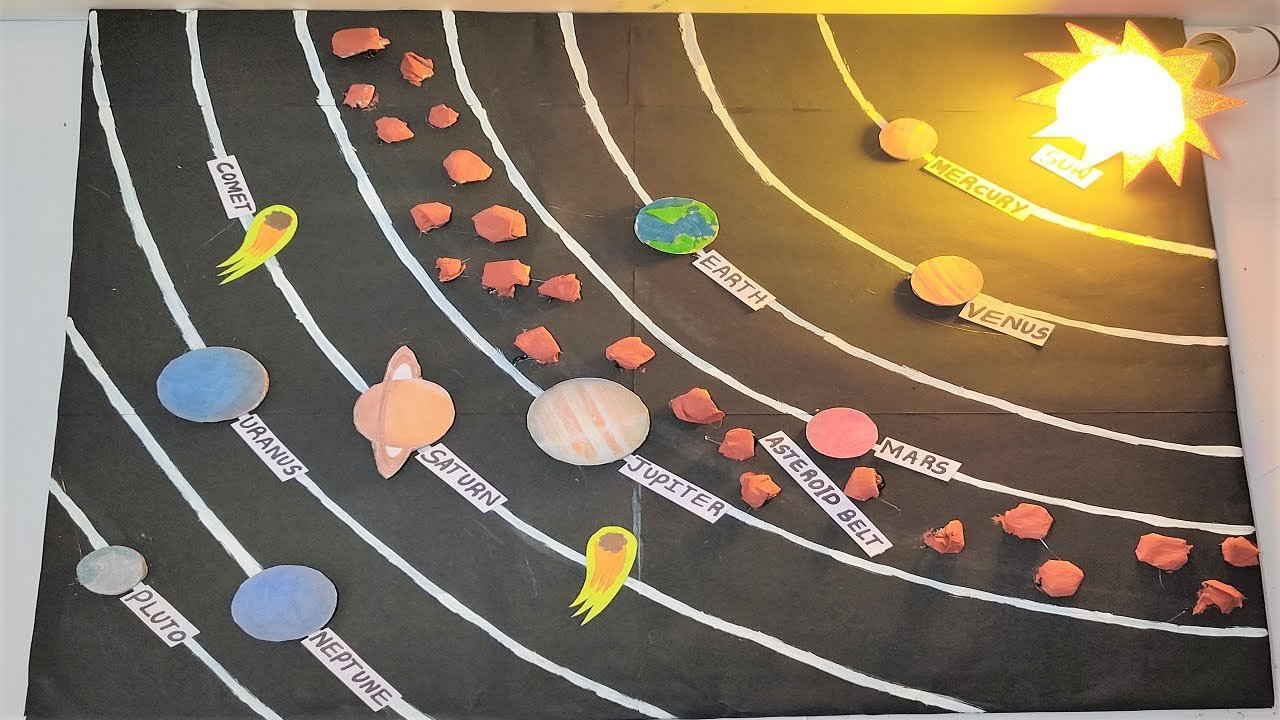In this post We have given detailed steps on how to make solar system working model science project for social science geography subject using cardboard and color paper

Creating a solar system working model using rectangle cardboard and paper planets is a great way to understand the layout and relative sizes of the planets in our solar system. Here’s a step-by-step guide to help you build this model:
Materials Needed:
- Rectangular Cardboard: For the base of the model.
- Color Paper or Construction Paper: For creating the planets.
- Markers, Paint, or Colored Pencils: For decorating the planets.
- String or Thin Wire: To suspend the planets from the base.
- Scissors and Craft Knife: For cutting the cardboard and paper.
- Glue or Tape: For assembling the model.
- Ruler and Pencil: For measuring and marking.
Video steps on making solar system working model
1. Prepare the Base:
- Cut a large rectangular piece from the cardboard. This will serve as the base of your model.
2. Create the Sun:
- Cut out a large circle from yellow color paper to represent the Sun.
- Decorate the circle to resemble the Sun’s surface using markers or paint.
- Glue or tape the Sun onto the center of the base.
3. Make the Planets:
- Research and determine the relative sizes of the planets in our solar system.
- Cut out circles or spheres from color paper to represent each planet. You can vary the sizes according to their actual sizes.
- Decorate each planet to resemble its appearance using markers or colored pencils. For example, Jupiter can have bands, Saturn can have rings, etc.
4. Suspend the Planets:
- Using string or thin wire, attach each paper planet to the top edge of the cardboard base.
- Ensure the planets are suspended at varying heights to represent their distances from the Sun accurately.
- Label each planet with its name using markers or labels.
5. Arrange the Planets:
- Place the cardboard base on a flat surface.
- Arrange the paper planets around the Sun in their correct order from the closest to the farthest: Mercury, Venus, Earth, Mars, Jupiter, Saturn, Uranus, and Neptune.
- Leave enough space between each planet to maintain the scale and relative distances.
Conclusion:
This solar system working model is an excellent visual representation of the layout and relative sizes of the planets in our solar system. It’s a great educational tool for learning about astronomy and space exploration. Enjoy building your model!
#solarsystemmodel #scienceproject #diy #howtofunda #geography #socialscience #sstmodel

